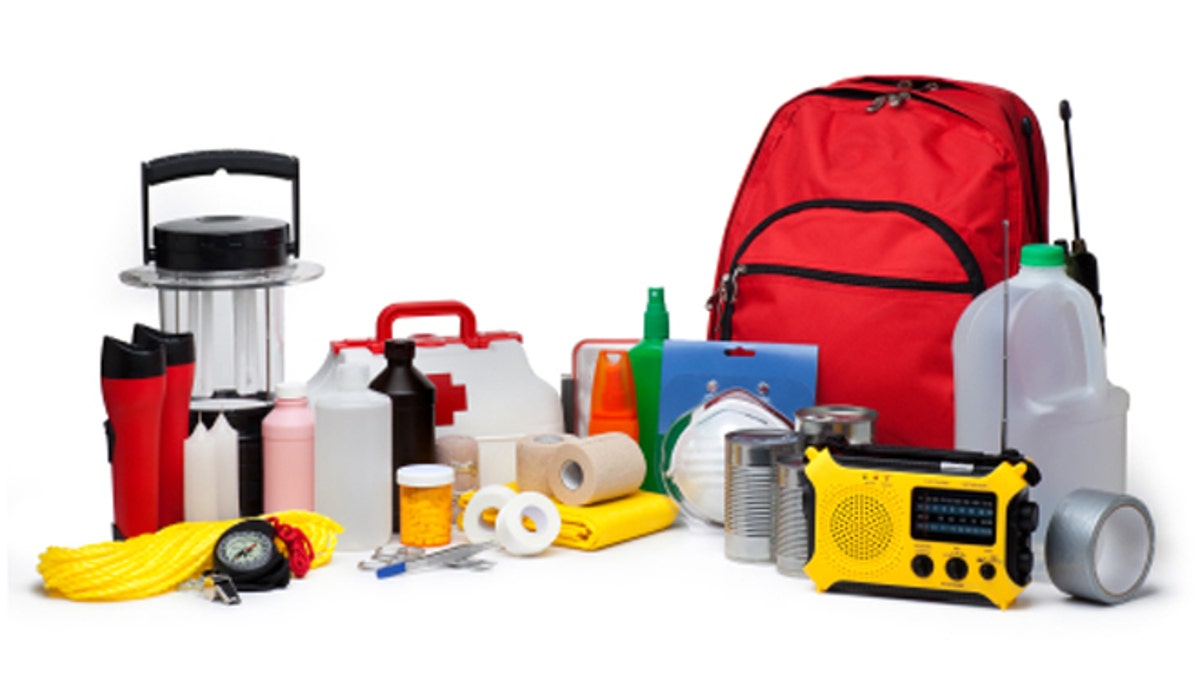
(iStock)
For people who live in the Northeast, Hurricane Sandy drove home the importance of a having emergency supplies on hand. With power and utilities knocked out, many were unprepared for the days that followed.
Unfortunately, a disaster kit is something that most homeowners overlook, but it’s an essential tool that can save you and your family should the worst happen. Here’s how to put together a kit that will help keep you safe no matter what strikes.
The Basics
Water: You should plan to have one gallon of water per day per person, with a supply that will last you at least three days. Store-bought water in plastic containers is your best bet, but if you plan on storing tap water, make sure you change your supply every six months to keep it fresh.
Food: As with water, you want to have at least a three-day supply of canned and dried food on hand, as well as a working can opener. In addition to the food, consider putting a small camp stove in your kit so that you don’t have to spend the next few days eating cold soup.
Cleaning Supplies: If water and power are out, proper sanitation might be hard to come by. Stock up on hand sanitizer and liquid bleach, allowing you to keep you and your eating utensils clean.
First Aid: To stay safe during a disaster, make sure to have a first aid kit on hand. In addition to the basic kit, you’ll also want to set aside a three-day supply of any medications that you regularly take.
Keep the Lights On: A supply of candles, weatherproof matches and battery-powered lanterns will make sure that you stay illuminated when the power is out.
Staying in Touch
Radio: When the electricity is out during a disaster, a battery-powered or hand-cranked radio is the best way to stay abreast of important news and announcements. An emergency alert radio also can warn you of impending disaster like an oncoming tornado.
Solar Charger: Internet service can be spotty during a disaster, but if you do have service, it won’t do you much good if your phone or laptop is dead. For mobile devices like phones and tablets, you’ll want a 5-10 watt solar charger. To keep your laptop running, you’ll want 45 watts or more.
Two-Way Radio: If phone service goes down, a two-way radio will allow you to stay in touch with loved ones if you have to separate for periods of time.
Beyond the Basics
Blankets: Without heat for days, you will likely need more blankets than you usually use to keep yourself warm at night. A stash of security blankets will ensure that you don’t have to shiver your way through a disaster.
Tools: It’s a good idea to keep a basic set of tools on hand in case you need to shut off the gas or water pipe, or clear debris. Pliers, a wrench, a crow bar, a utility knife and a small ax will ensure that you have the right tools for the job should the worst happen. You should also keep a supply of plastic sheeting and duct tape on hand in case you need to patch up broken windows.
Games and Entertainment: With many of the usual distractions like TV and the Internet out of commission, the days following a disaster can be kind of boring. Keep the kids, and yourself, entertained with a pack of cards and a few board games.
Is Everyone Covered?
In addition to the basics that everyone needs, like food and water, consider any special needs for those in your household. Infants will need an extra supply of diapers and formula. If you have pets, put aside a supply of pet food, litter, and extra water for the animals.